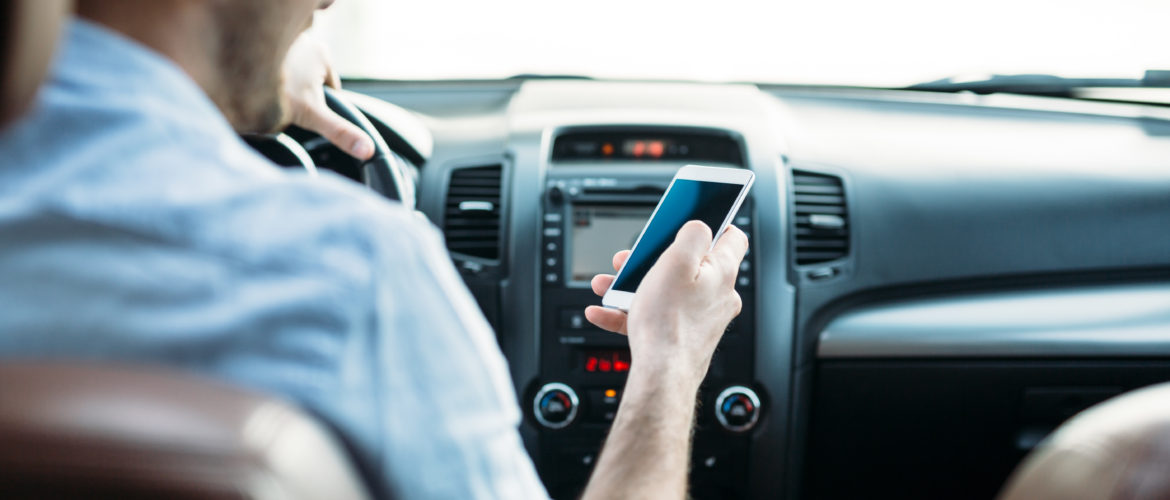By: Lauren DeClaire, M.A., BCBA
It is no secret that technology has significantly advanced in recent decades. Smart phones have become a huge part of our everyday lives. Next time you are walking down the street, sitting in a restaurant, waiting in line or stopped at a red light, take a second to look around and I’d bet you could find at least a handful of people with their face staring at some sort of screen. Now, let’s talk about the red-light situation. Texting while driving is a newer issue within our culture as smart phones have become more and more popular. It is hard to believe the first iPhone was released just 10 years ago and text messaging wasn’t even a thing before the 90s. So now that technology has become such a huge part of our lives, how is this playing a role in other sets of behaviors such as driving. Texting while driving involves more than just texting. Which is now categorized as distracted driving. Having a smartphone at your fingertips provides a multitude of distractions, so I was interested in the analysis behind these contingencies as behavioral strategies that could help.
Apples has recently come out with a new feature to help decrease the frequency of behaviors related to being on your phone. For example, if your phone is locked, in a moving car, or connected to your Bluetooth, then you will not receive notifications. This is a great step toward helping us become safer drivers. Until you get in the car and simply hit the “I’m not driving” button then have full access to your phone. What would be nice would be a feature in which the only thing on your phone that you’re able to access while in motion would be phone calls and Google Maps or Maps applications. All other things may act as competing contingencies and increase the likelihood of you taking your eyes/hands off the wheel.
While driving you have rule-governed contingencies in place to act as a punishment for such behaviors to help decrease texting, speeding etc. However, the likelihood of getting pulled over is too infrequent and too improbable. Meaning, the response of begin on your phone while behind the wheel often goes unpunished. In the event you do get pulled over, this may be enough to decrease the behavior for a brief period of time, especially after paying that large check. But eventually, as with any punishment contingencies, your behavior will resort back to baseline levels of responding and you will soon be looking at your phone again.
Competing Contingencies
Competing contingencies are also at play here. When you’re on the road you get emails, text messages, phone calls, or you simply get bored and quickly try to check your twitter or Instagram account. The list of competing social contingencies behind that little smartphone could go on and on.
Incompatible or compatible behaviors?
Driving involves a set of concurrent responses that are occurring at the same time. When you add in other behaviors such as picking up your phone, pressing the home screen, opening an application, and texting a message, one could argue that these two sets of responses (texting and driving) are incompatible behaviors. But you may also argue the two response classes are compatible in the sense that they are able to sometimes successfully occur at the same time.
Some solutions to this cultural problem may be to change the consequences and the environmental conditions for the behavior. For example, reinforcement systems in addition to the response cost (fines) contingencies. Some insurance providers kind of do this by rewarding you with points for safer driving habits. Although, their way of tracking these habits is typically a duration of time without getting into accidents and the reward may be a little more delayed. Ways to manipulate the environmental conditions would be to ensure all applications on your phones are unable to be accessed while driving.
In addition, it is good to see more and more companies create more hands-free technology with the use of GPS and hands-free systems in your cars. However, I personally have such systems with Siri, hands-free phone etc. and find it easier to simply use my phone. At time the response effort with using Siri or your hands-free system in the car can be even more effortful than using your phone. Multiple times Siri has unsuccessfully translated my verbal behavior into texts, which then requires me to delete and simply write out the message. The more you do this process the more aversive these hands-free systems become, until eventually your behavior is put on extinction. What are some ways we could better track the actual behaviors of safe driving? How do you think behavior analysis could be applied to this issue?

